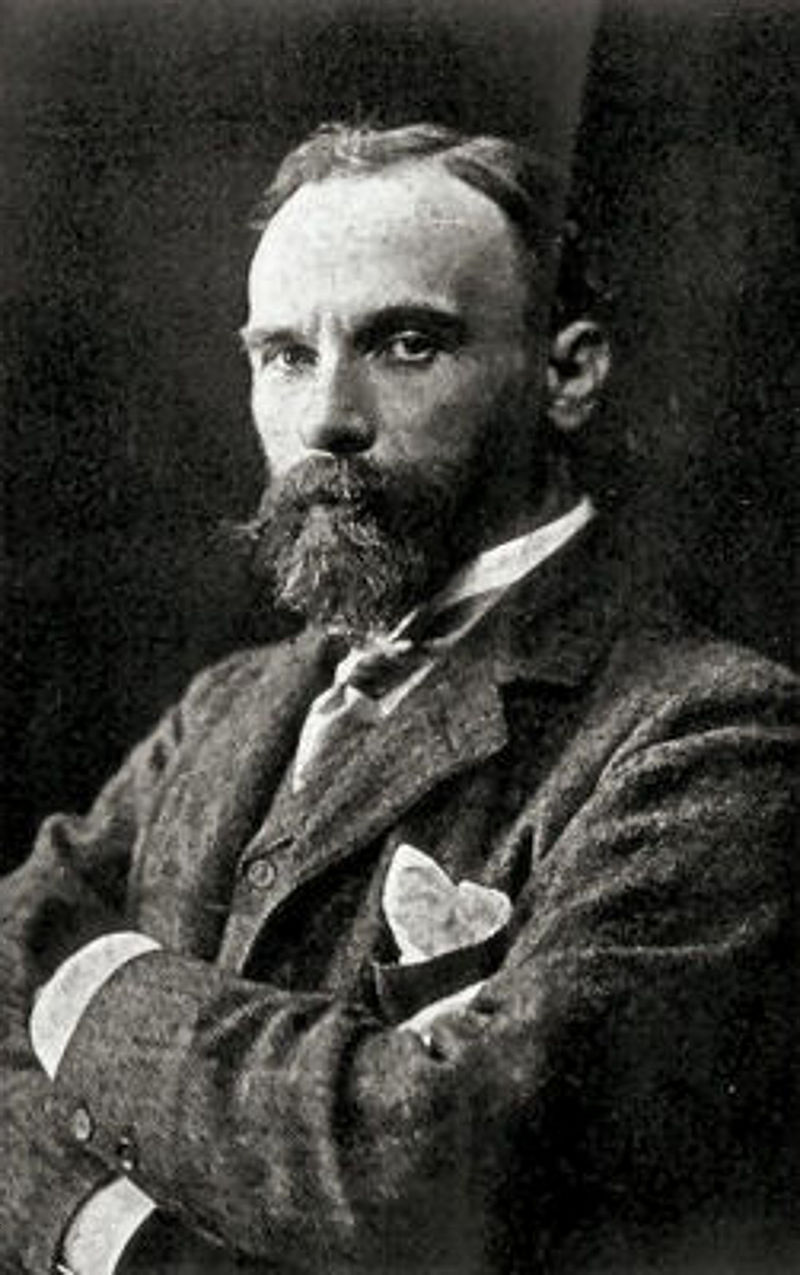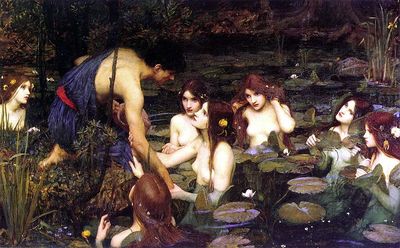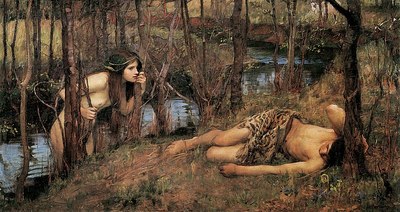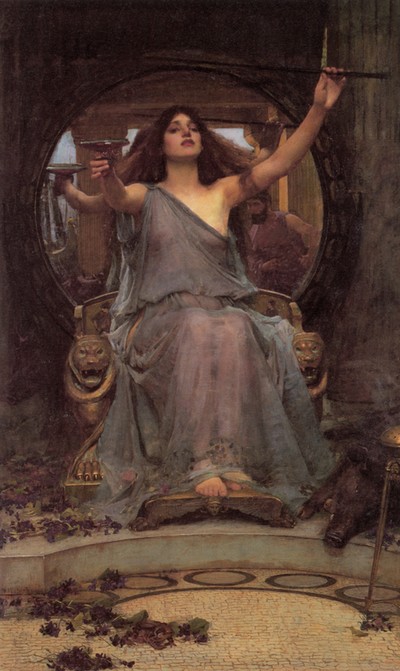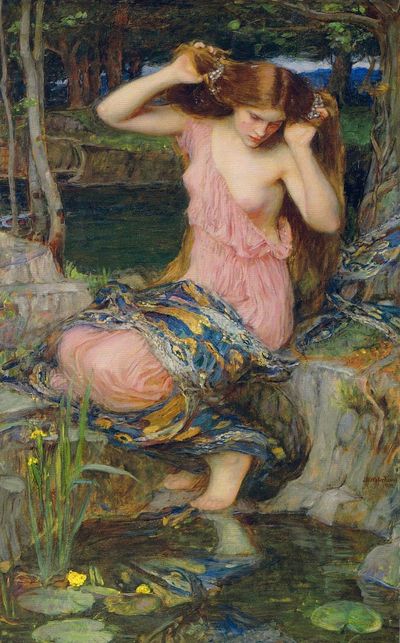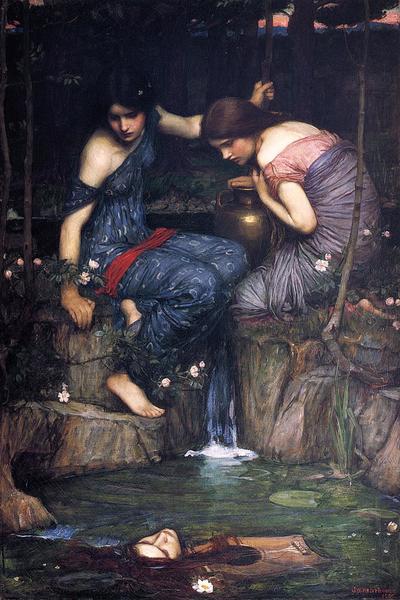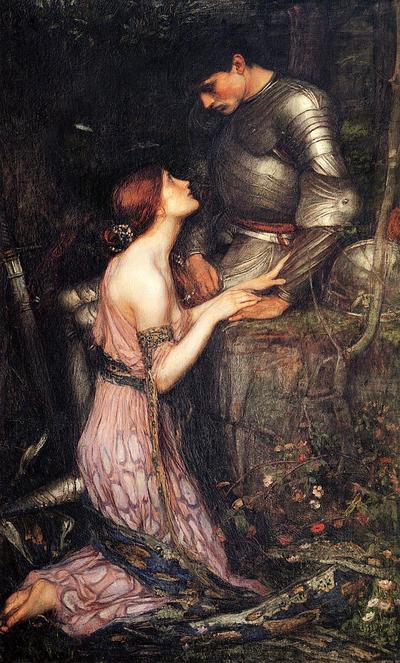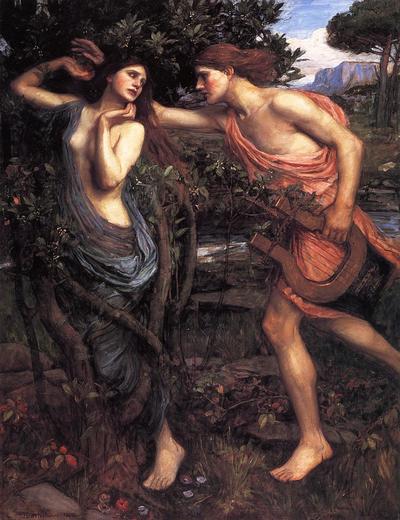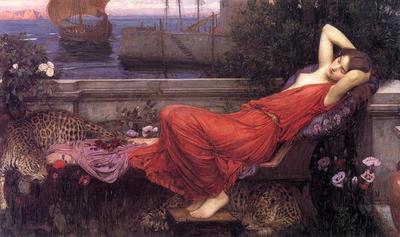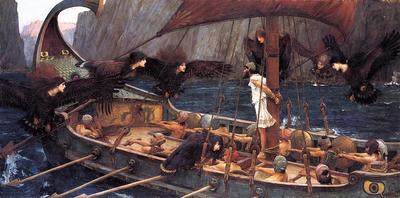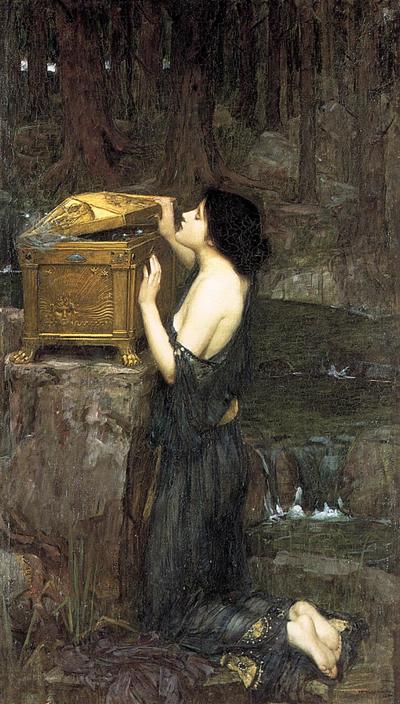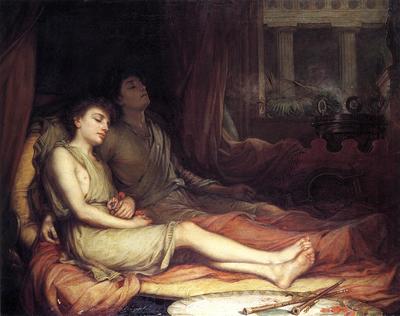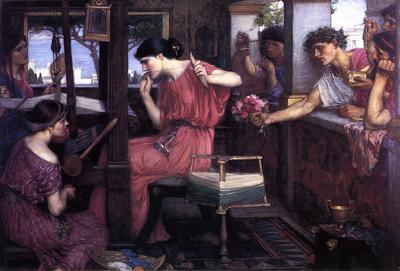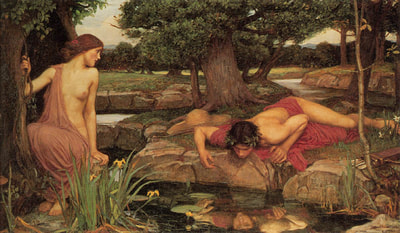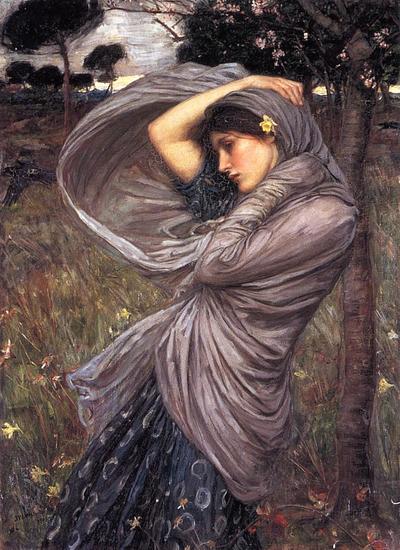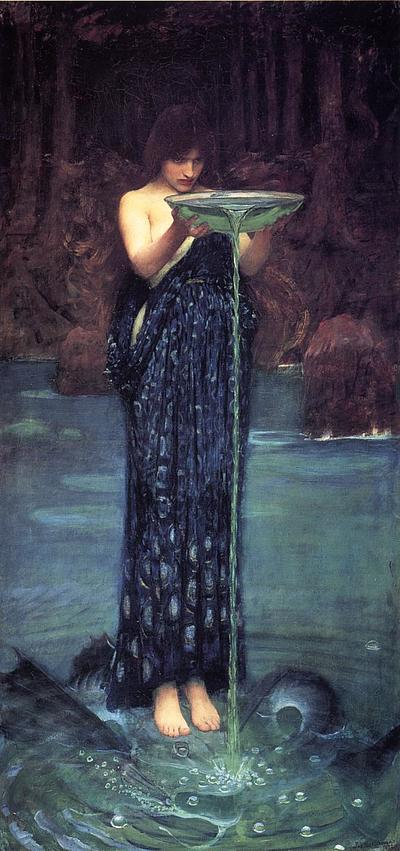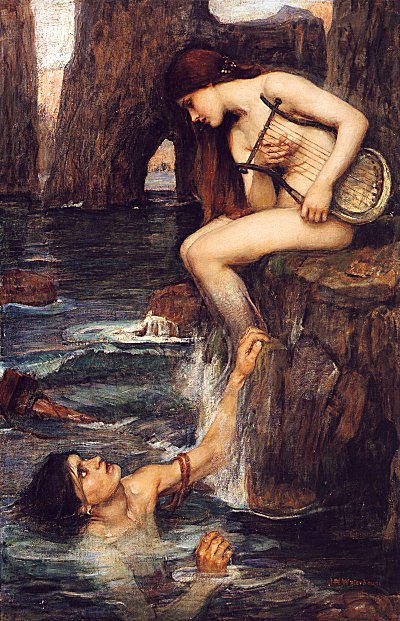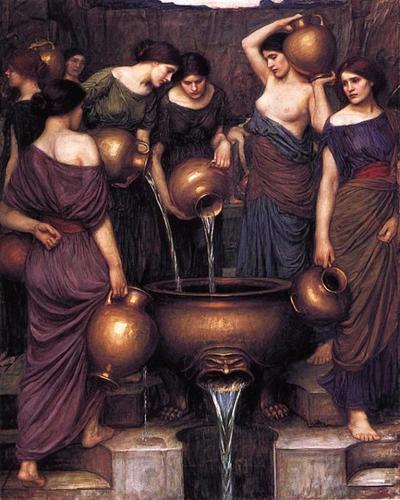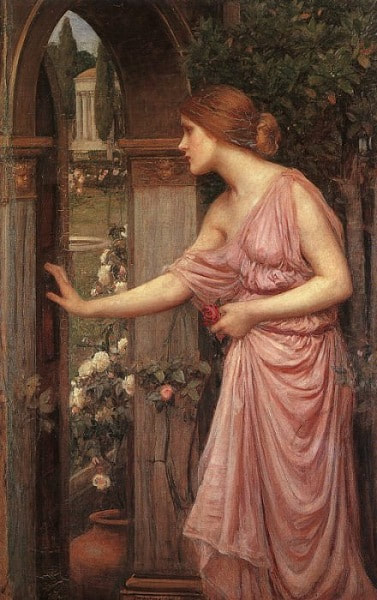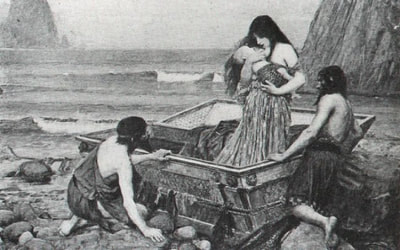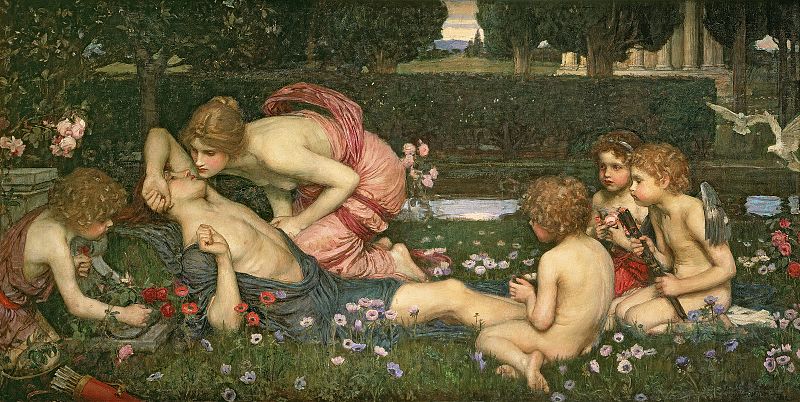John William Waterhouse (1849–1917)
Greek Mythology and John William WaterhouseBorn: 6 April 1849; Rome, Italy
Died: 10 February 1917; London Nationality: British Art Movement: Pre-Raphaelite Trained: Royal Academy of Art John William Waterhouse (6 April 1849, Rome – 10 February 1917, London) was an English painter who worked in the style of the Pre-Raphaelites; although Waterhouse worked a number of years after the Pre-Raphaelites were formed (1848). Born in 1849 in Rome to parents who were also painters, Waterhouse would be back in England by 1850, and when still young would assist his father with his work. Aged 21, Waterhouse would be enrolled in the prestigious Royal Academy of Art. Working primarily in oil, Waterhouse would produce in excess of 200 paintings in a painting career of about 50 years; for Waterhouse would die in 1917 of cancer. Despite being classed as a Pre-Raphaelite painter, Waterhouse certainly drew inspiration from the classical movement, depicting realism in what were certainly fantastic scenes. The majority of the paintings produced by Waterhouse relate to scenes based on stories from Arthurian legend, or Greek mythology; with famous examples including Ariadne (1898) and Sleep and his half-brother Death (1874). |
|
|
|
|
|
|
